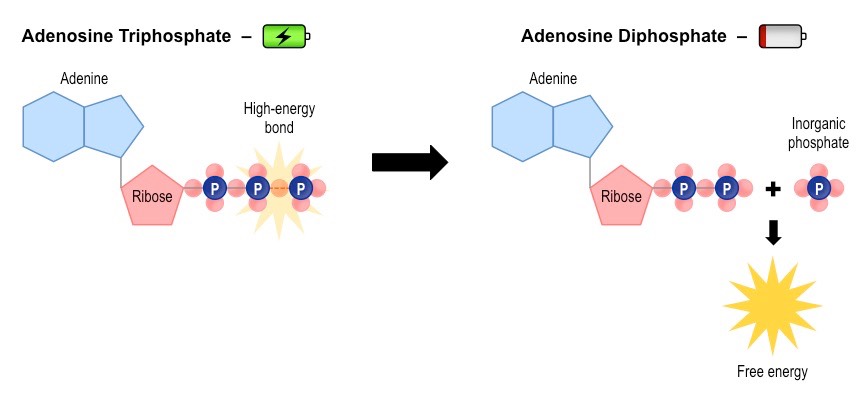Cell respiration
Key ideas:
Understandings:
Cell respiration is the controlled release of energy from organic compounds to produce ATP
ATP from cell respiration is immediately available as a source of energy in the cell
Anaerobic cell respiration gives a small yield of ATP from glucose
Aerobic cell respiration requires oxygen and gives a large yield of ATP from glucose
Applications:
Use of anaerobic cell respiration in yeasts to produce ethanol and carbon dioxide in baking
Lactate production in humans when anaerobic respiration is used to maximise the power of muscle contractions
ATP PRODUCTION
Understanding:
• Cell respiration is the controlled release of energy from organic compounds to produce ATP
Cell respiration is the controlled release of energy from organic compounds to produce ATP
The main organic compound used for this process is carbohydrates (glucose), although lipids and proteins can also be digested
There are two main types of cell respiration:
Anaerobic respiration involves the partial breakdown of glucose in the cytosol for a small yield of ATP
Aerobic respiration utilises oxygen to completely break down glucose in the mitochondria for a larger ATP yield
Cell Respiration Equation (Complete Breakdown)

![]()
Understanding:
• ATP from cell respiration is immediately available as a source of energy in the cell
ATP (adenosine triphosphate) is a high energy molecule that functions as an immediate source of power for cell processes
One molecule of ATP contains three covalently linked phosphate groups – which store potential energy in their bonds
When ATP is hydrolysed (to form ADP + Pi) the energy stored in the phophate bond is released to be used by the cell
Cell respiration uses energy stored in organic molecules to regenerate ATP from ADP + Pi (via oxidation)
Relationship between ATP and ADP
